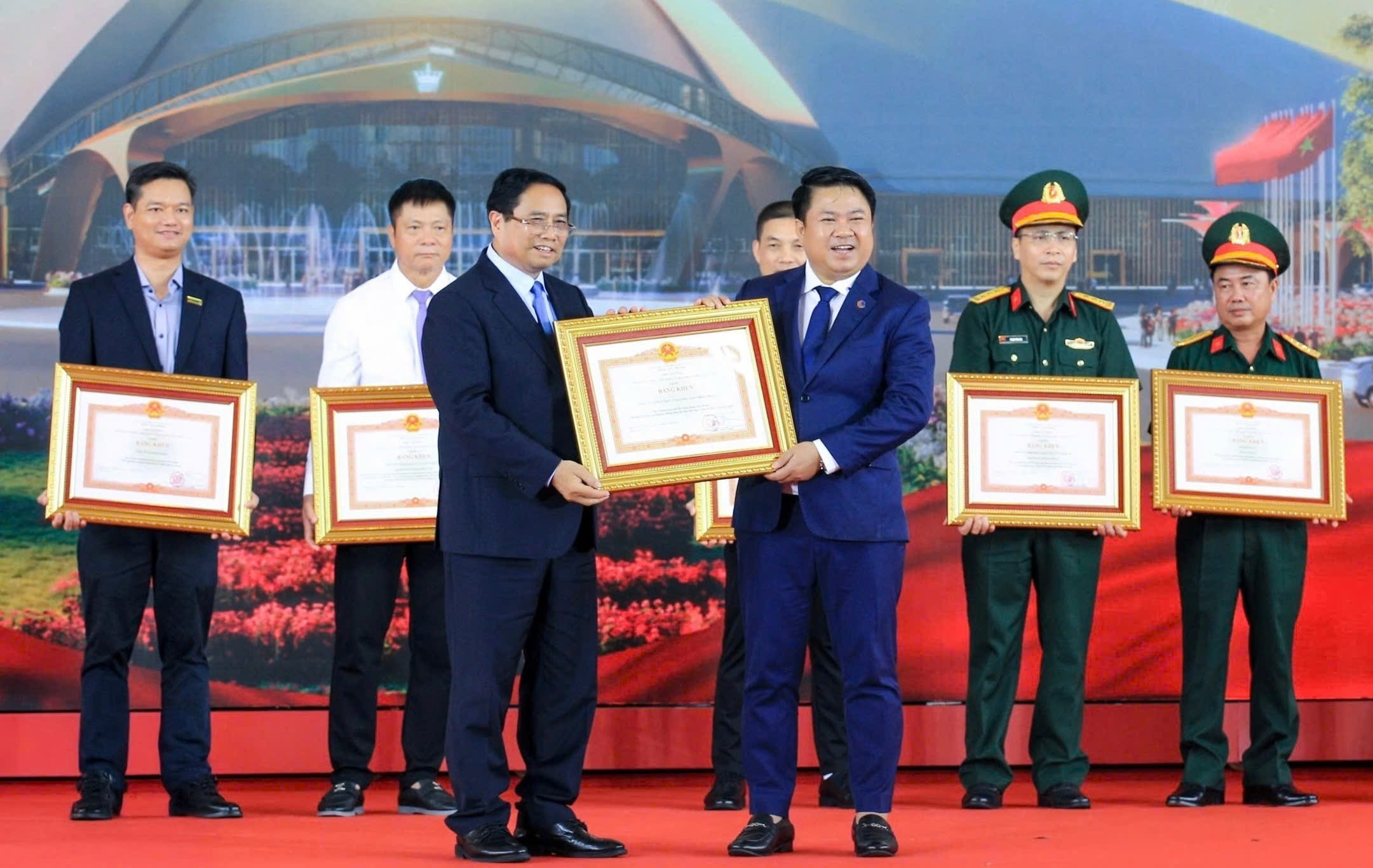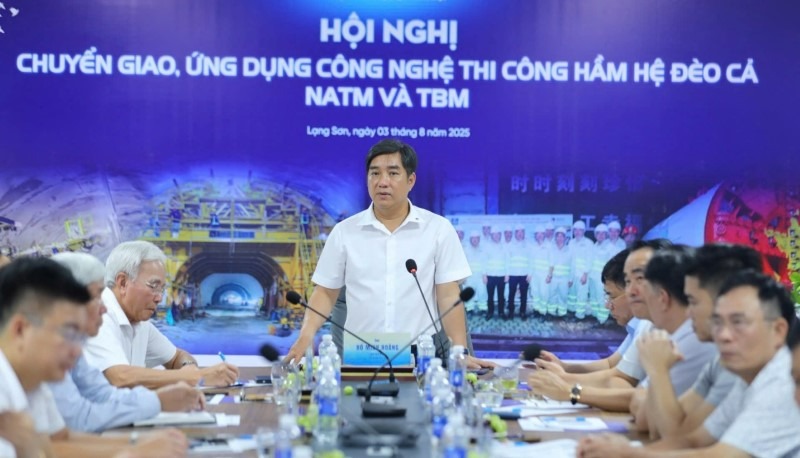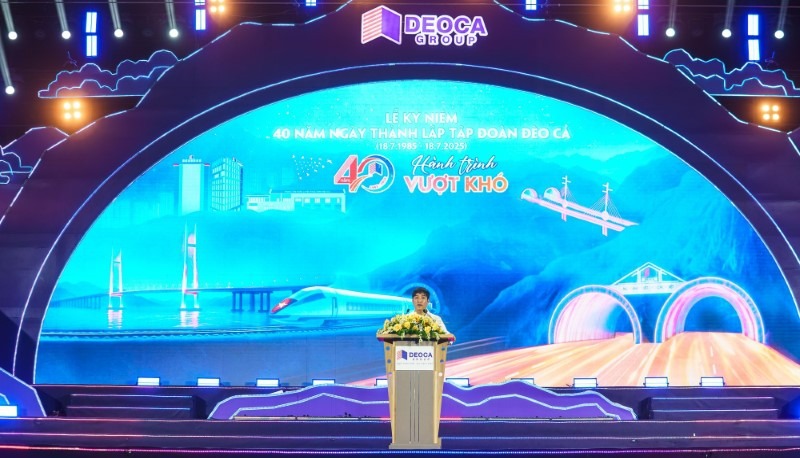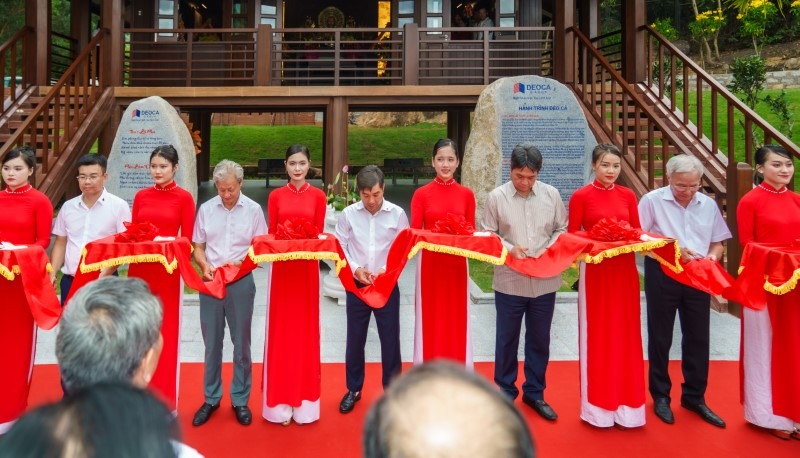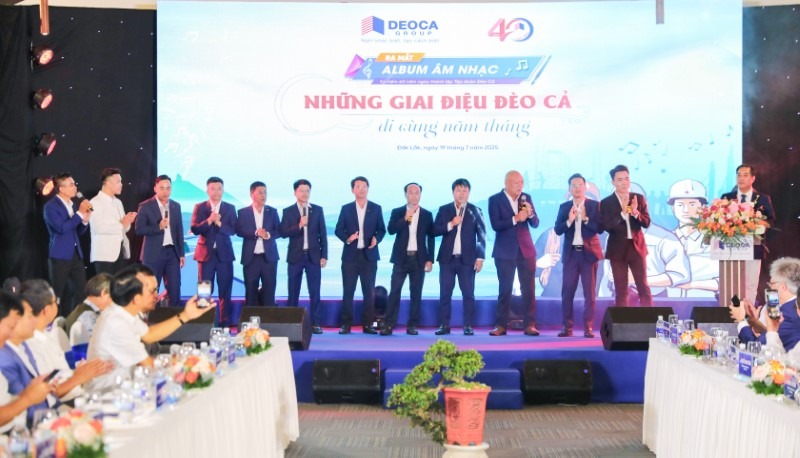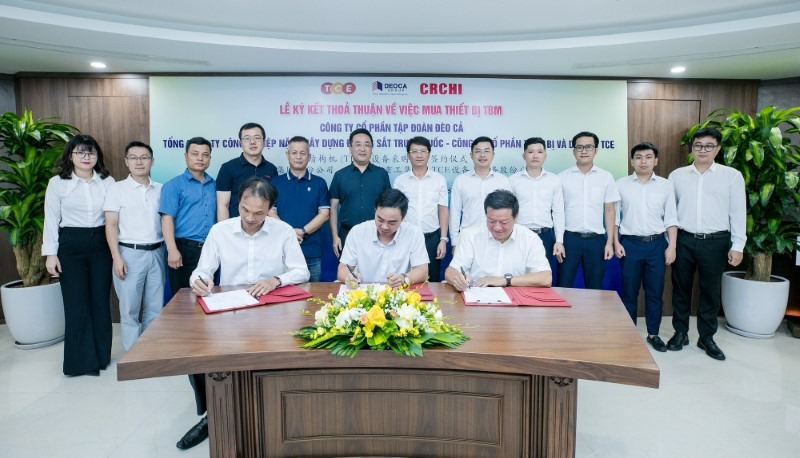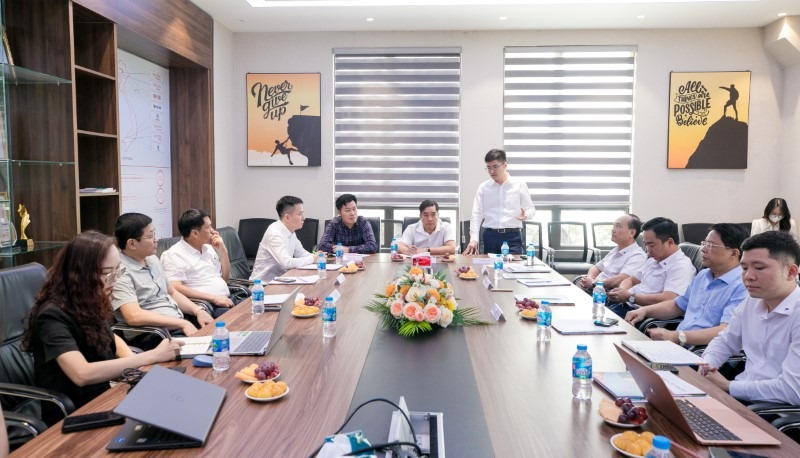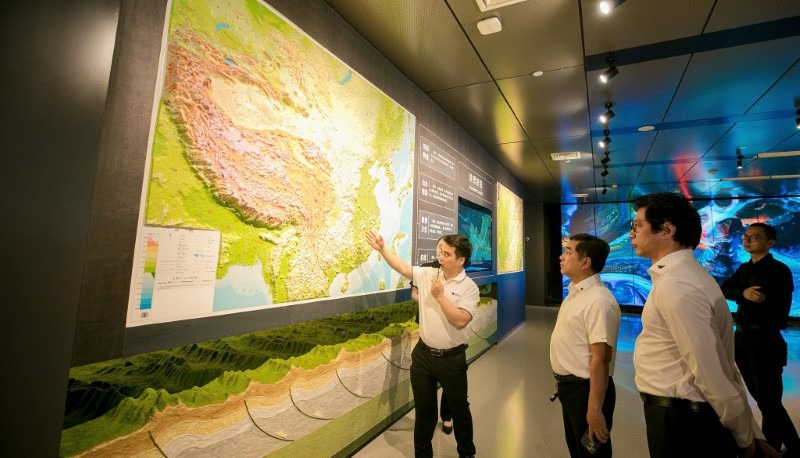From October 24 to 28, 2025, in China, the delegation from DEOCA Group - led by Mr. Ho Minh Hoang, Chairman of the Board of Directors - worked and organized specialized seminars to exchange experiences. These activities were combined with on-site surveys to explore feasible solutions for constructing infrastructure integrated with flood control (water management) in urban areas in Vietnam.
Accompanying the delegation were representatives from A2Z Construction Consulting JSC, the Vietnam Institute of Water Resources Science, along with leading experts in the field of water resources in Vietnam. On the Chinese side, participants included the China Design Group, as well as leading research institutes and universities in the fields of water resources and underground structures: Chongqing Architectural Design Institute, Yangzhou Water Resources Planning Research Institute, Institute of Tunnel and Underground Engineering Design Research of China, Smart City Research Institute, He Hai University, and Nan Hua University of Technology.
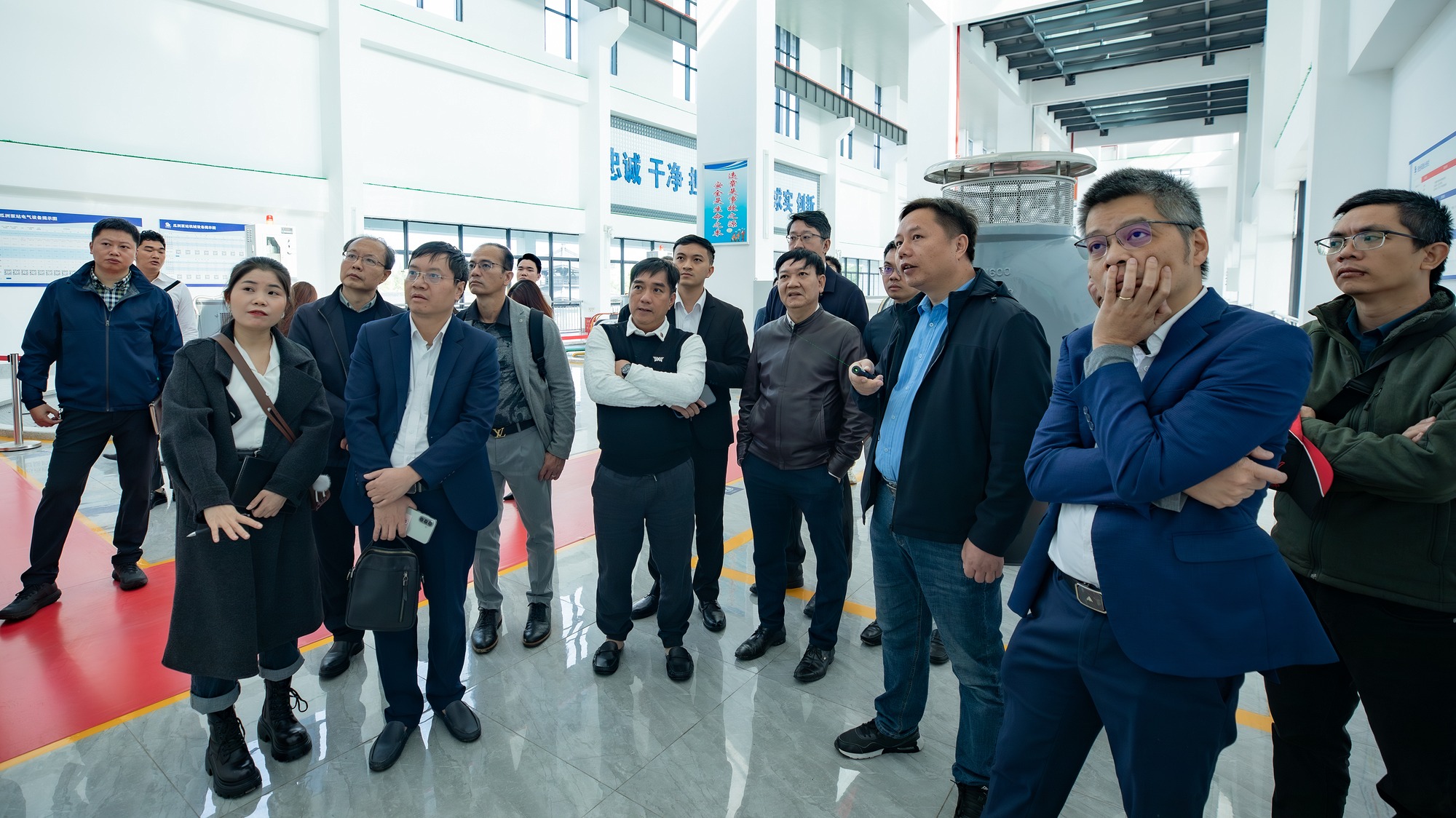
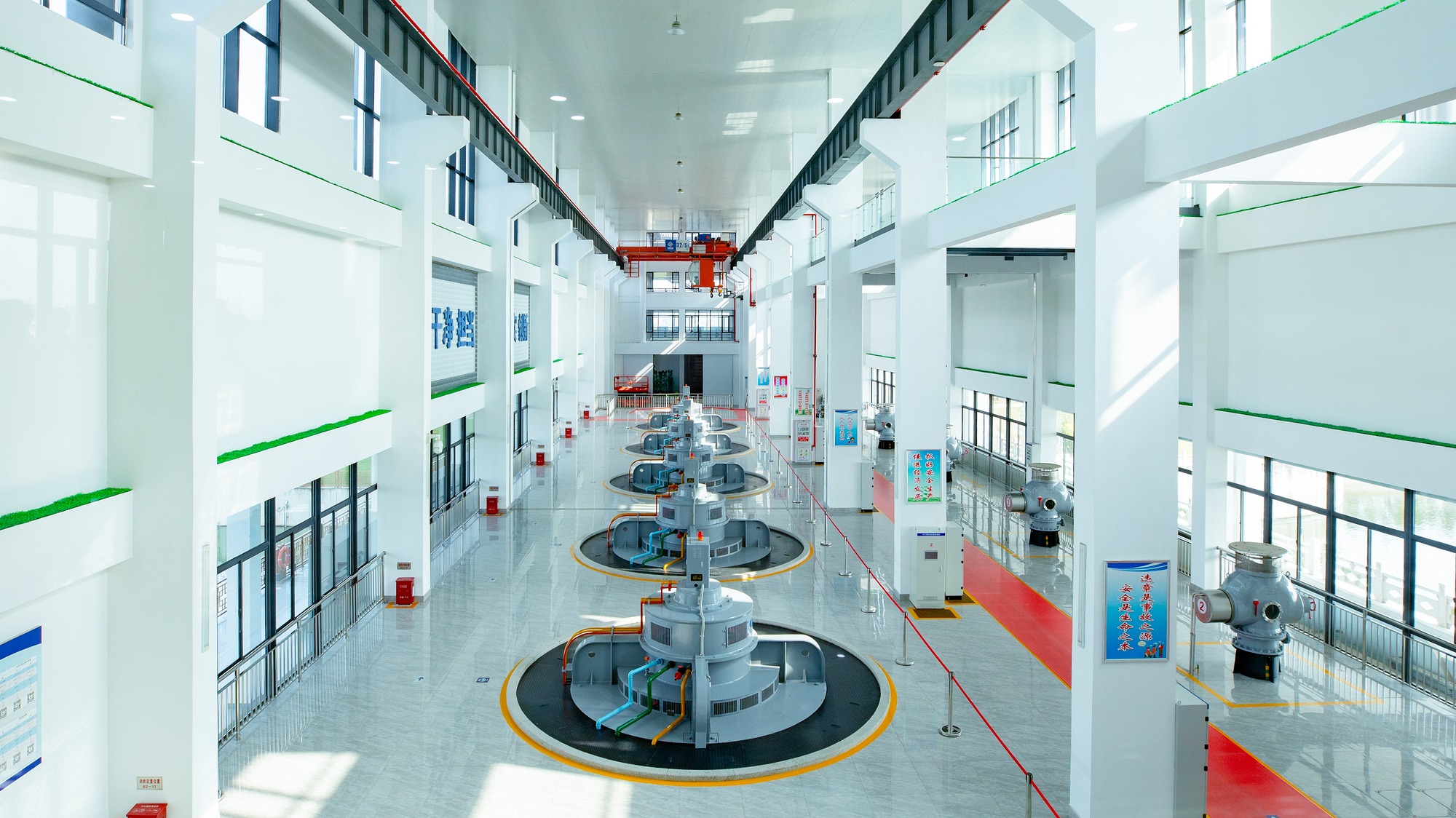
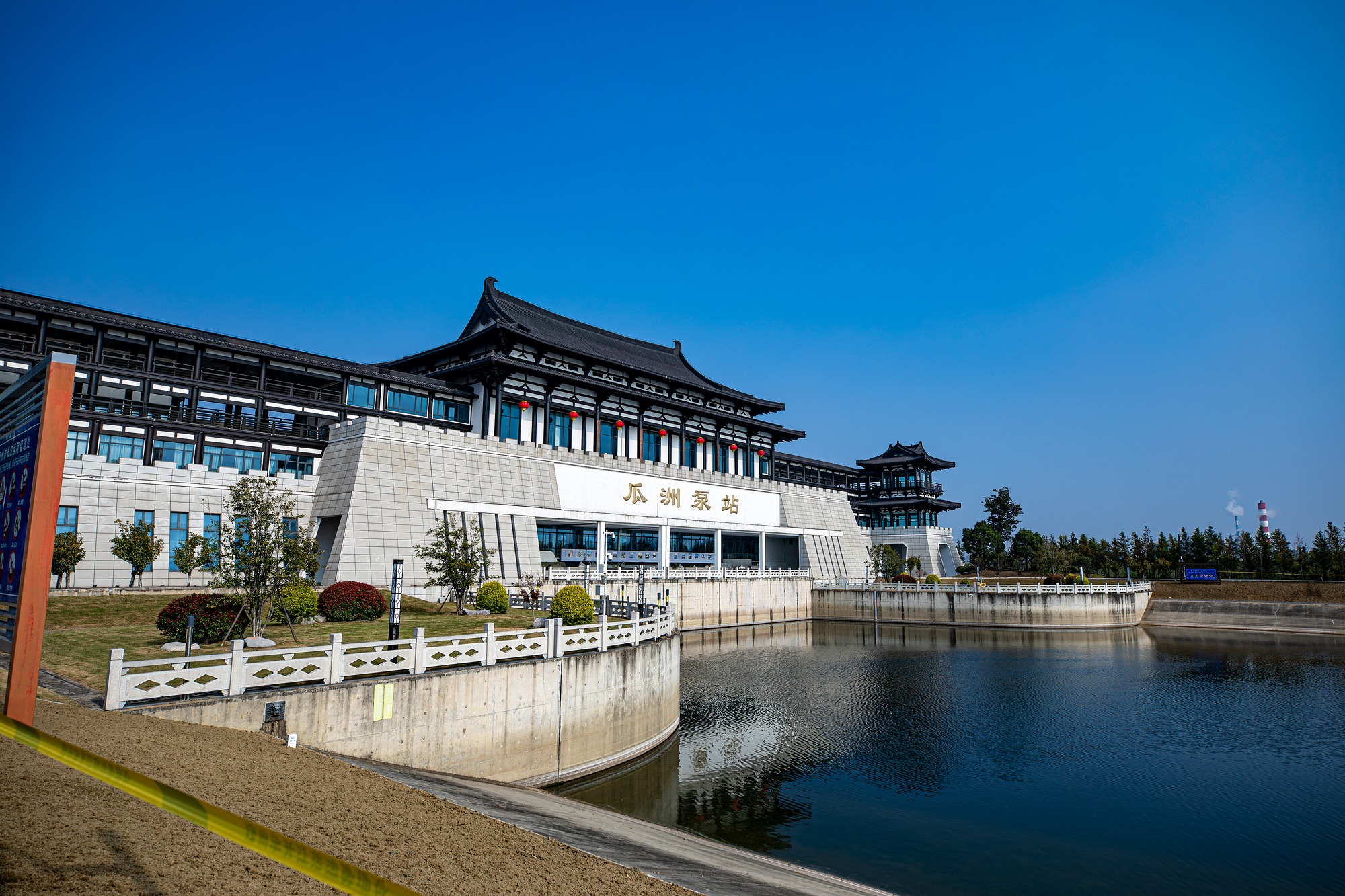
The delegation visited the Guazhou Pumping Station, designed in the architectural style of the Tang Dynasty. This station has a total installed capacity of 170 m³/second and is a critical component of the Yangzhou urban flood control project.
The working agenda took place in the context of DEOCA Group's current efforts to strengthen international cooperation. This aims to mobilize global resources and expertise to research and implement the Red River Grand Avenue Landscape Axis Project. It is combined with comprehensive solutions for urban flood prevention, planning drainage systems, regulating lakes to adjust flow volumes, and reducing flooding for the capital of Hanoi and other major cities in Vietnam.
Prioritizing solving the “water management problem” when implementing the Red River Scenic Grand Avenue Landscape Axis Project
Exchanging views surrounding the research on Red River Scenic Grand Avenue Landscape Axis Project, Mr. Lu Zhiyuan, Party Committee Secretary and President of the Chongqing Architectural Design Institute, stated that, in recent times, the Institute has mobilized its top experts and specialized teams to conduct research, seeking solutions that both create a multi-layered transportation system integrated with water management, and utilize existing infrastructure along with inherent values to enhance the economic - cultural - historical value of the Red River.
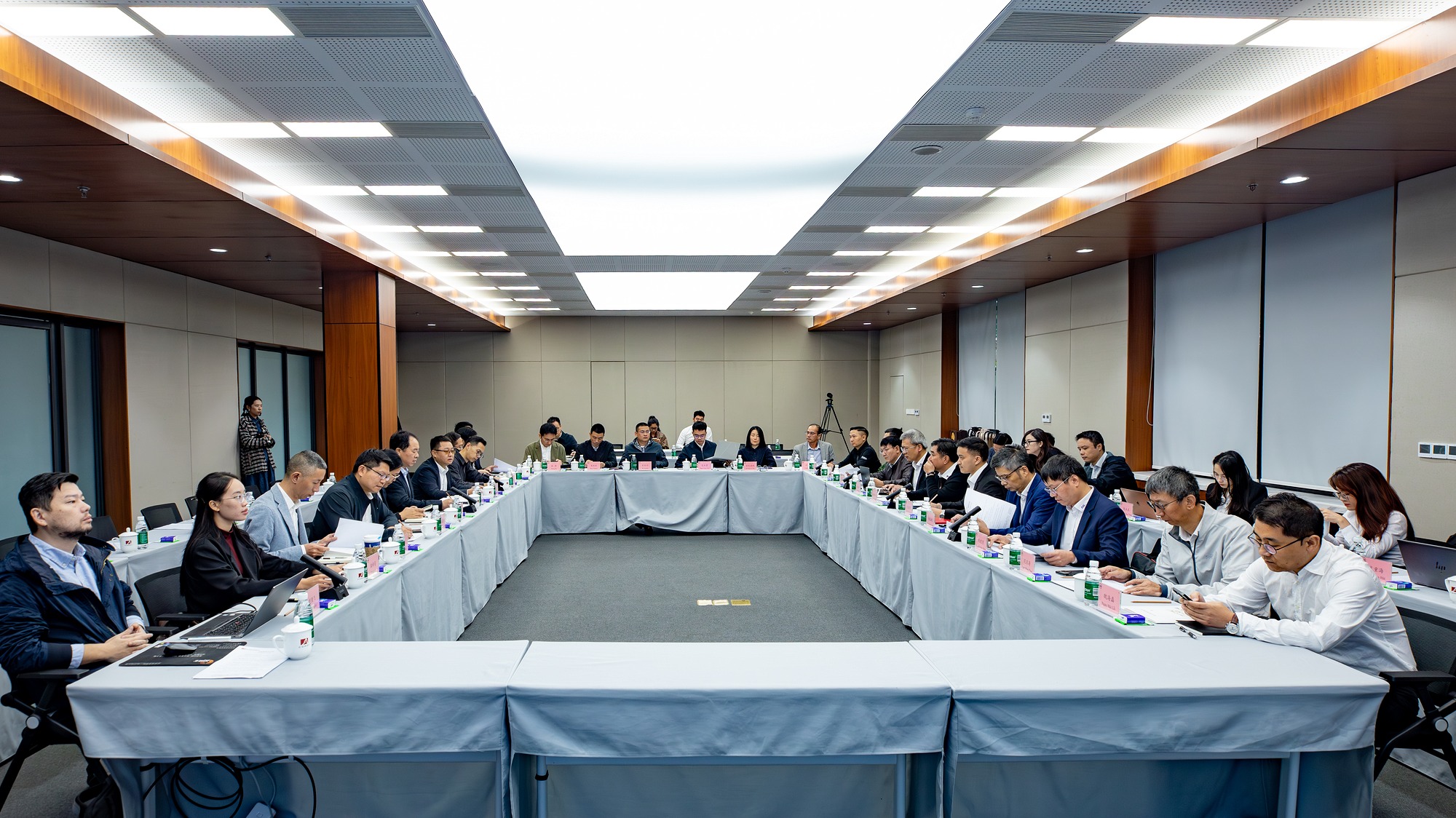
The delegation worked with the Chongqing Architectural Design Institute to discuss plans for the Red River Grand Avenue Landscape Axis Project.
Mr. Ho Minh Hoang - Chairman of the Board of Directors of DEOCA Group - shared that, having received trust and support from the Party and State leadership, DEOCA Group has actively worked and coordinated with leading partners both domestically and internationally. They have organized delegations to study riverside urban models, methods for handling flood prevention, and successful water management solutions in many countries, such as South Korea, Japan, and China.
Referring to the flooding situation in Vietnam's urban areas, which is particularly severe in Hanoi, the Chairman of DEOCA Group emphasized the importance of meticulously calculating elevations for each route segment. “We must soon calculate and standardize the road elevations in the planning design. This is the number one priority right now for the Red River Grand Avenue Landscape Project. With the data currently being used by the Chongqing Design Institute from 2013, it cannot accurately plan warnings for our project; it needs to be reviewed”.
He requested that the partner research units calculate elevations based on the latest data on hydrology, geology, and flood elevations. Concurrently, he required the overall project consulting unit - which is A2Z Construction Consulting JSC in collaboration with China Design Group (a leading Chinese consulting “brand” that has invested in the A2Z) - with their professionalism and experience, to demonstrate more responsibility for consulting products in Vietnam, starting with the Red River Grand Avenue Landscape Project. They need to immediately update the latest water level data, as well as the abnormal developments that have occurred in various localities, especially in the Red River - Hanoi area, during the past September and October. “On October 3, 2025, when the Red River water level rose high above Alert Level 1, Chairman of the Hanoi City People's Committee, Mr. Tran Sy Thanh, requested me to direct the consulting unit to record the actual situation, to ensure that the preparation of the road route planning scheme and urban functional zoning must guarantee safety and flood drainage."
Regarding this issue, Prof. Dr. Le Van Nghi - Director of the National Key Laboratory on River and Sea Dynamics - noted: The Red River system has many distinct hydrological features compared to other river systems in the world, such as: the dike system has been formed for over thousands of years, as well as the water level elevations and a 500-year flood control guarantee cycle. Therefore, during the research and design planning process for the project, besides referring to advanced and successful models worldwide, attention must be paid to the current characteristics for adjustments and optimizations to ensure suitability.
“During the process of working with DEOCA and the relevant parties, we have agreed upon the quality criteria set forth. Firstly, to limit the increase in 500-year floods. Secondly, to limit the potential for causing riverbed accretion and minimize changes to the riverbank surface. We have also performed mathematical simulations and established detailed physical research models for the project in some areas in Hanoi” - said Expert Le Van Nghi.
Concurring, Water Resources Expert, Mrs. Do Thi Le Thu, suggested the need to update hydrological and water resources data from the Hydrological Technical Centers. At the same time, it is necessary to obtain operational data from hydropower plants along the Red River system to serve detailed research and calculations. “This is a particularly important project for the Red River system as well as for Vietnam. To conduct research, we need complete and detailed data of the entire system from upstream downwards, as well as the operational procedures of the hydropower plants to calculate reasonable elevations for the Project”.
Acknowledging the contributions, Mr. Ho Minh Hoang noted that design ideas must be feasible and align with the implementation capabilities of all parties. At the same time, if the solutions are implemented reasonably, the capital of Hanoi will be able to resolve the flooding situation due to high floodwater levels on the Red River and prolonged heavy rains within the inner city. This demonstrates that the elevation planning cannot be separated from the overall drainage solutions for the entire city.
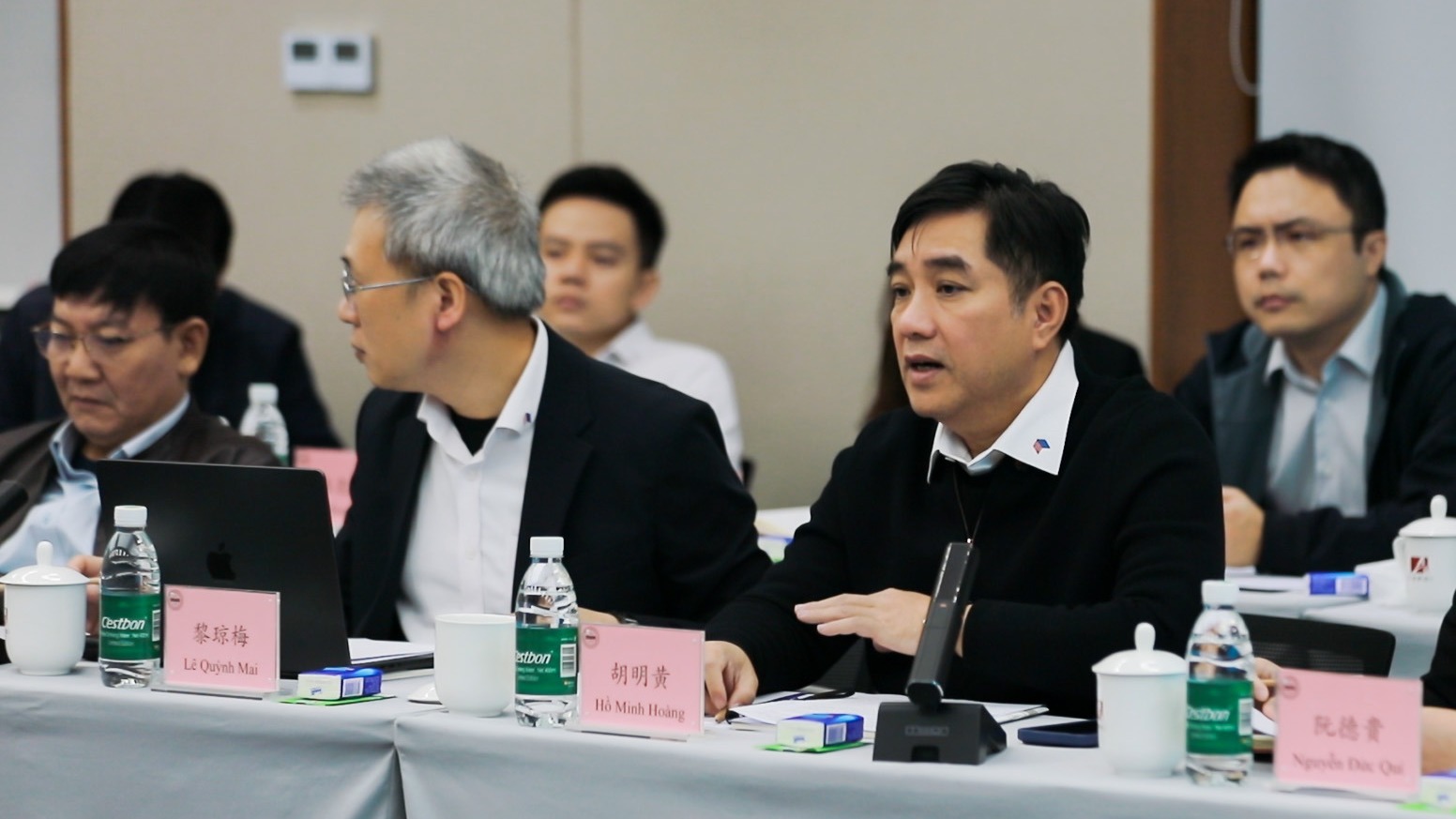
Mr. Ho Minh Hoang assessed that if the solutions are implemented reasonably, the capital of Hanoi will be able to resolve the flooding situation due to high floodwater levels on the Red River and prolonged heavy rains within the inner city.
The dual-purpose TBM underground tunnel: A promising model for sustainable urban development
Mr. Lu Zhiyuan stated that, overall, flood prevention and anti-flooding are two distinct systems. Experience in China indicates that there are two main reasons leading to flooding: due to extreme weather in a short period, or due to poor infrastructure and inefficient operation of the drainage system.
From this, the Institute's representative offered preliminary solutions for research and potential application. These include installing pumping systems inside the dikes to pump water from flooded areas inside the city to the outside. Another is designing parking systems integrated with temporary water storage capabilities, based on weather and hydrological assessment results, to regulate and respond when the water level rises high (similar to the system along the Yangtze River in Chongqing city). Additionally, outside the dikes, architectural structures with certain water storage capabilities can be arranged. Using flood-resistant vegetation is also an option that needs to be considered.
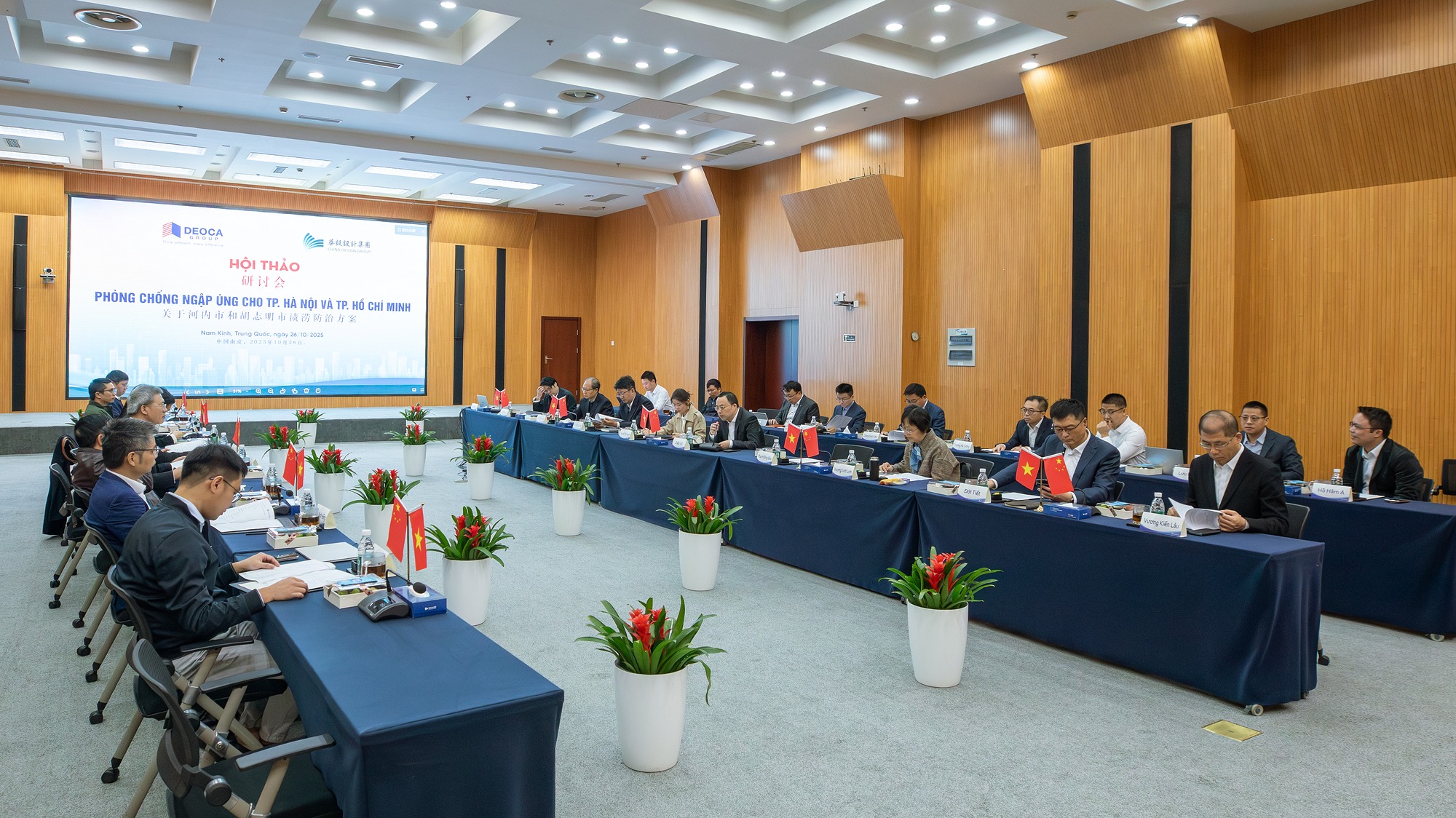
Seminar on seeking solutions for flood prevention and urban drainage in Vietnam, jointly organized by DEOCA Group and China Design Group.
Mr. Ho Minh Hoang evaluated the experiences compiled to propose a Three-Tier Strategy: Short-term, medium-term, and long-term. Immediate solutions (1-2 years) are to clear the entire network of manholes, drainage culverts, and dredge the To Lich and Ta Nhue rivers. Medium-term (2-5 years) includes constructing a network of modern pumping stations at key inundation points. Long-term (5-10 years) encompasses building 3-5 large regulating lakes in suburban areas, combined with ecological urban zones, and implementing multi-purpose TBM tunnels for key routes.
Particularly, supplement smart technology solutions such as: Early flood warning system (IoT sensors), Real-time flood map (AI + Big Data), Green roofs and permeable pavements (sponge city solutions), Separate rainwater drainage planning (separating rainwater - wastewater). This strategy balances feasibility, cost-effectiveness, and sustainability, while learning from cities and nations such as Tokyo, Seoul, Singapore, and Malaysia, which have succeeded in flood prevention.
Malaysia's effective flood prevention solution, typically the SMART Tunnel in Kuala Lumpur city, was constructed using TBM (Tunnel Boring Machine) technology with a two-tier tunnel cross-section scale to serve both traffic circulation and water storage for flood prevention.
At the seminar, Dr. Nguyen Huu Dung - General Director of A2Z Construction Consulting Company, who previously participated in consulting for the DEOCA Road Tunnel Project (in the role of Assistant to the General Director of the Project Enterprise), stated that the idea of building a tunnel that ensures vehicle circulation while also supporting drainage and flood discharge was proposed by Mr. Ho Minh Hoang, Chairman of the Board of Directors of DEOCA Group, 15 years ago. “Since 2010, when we began to implement the proposal for the DEOCA Road Tunnel Project, we have visited, studied, and admired Malaysia”.
Regarding the above solution, Mr. Pham Dong Thao - Vice Chairman of the Board of Directors of China Design Group - stated that this is the first time they have approached the idea from DEOCA Group. The department in charge of hydrology, water resources, and water regulation at China Design Group will conduct further in-depth research to provide feedback on the feasibility assessment. However, they fundamentally agree that the “Dual-Purpose Tunnel” resolution direction proposed by DEOCA Group is very creative and has a basis for implementation, especially in Vietnamese urban areas suffering from inundation, traffic congestion, and significant land clearance costs... The implementation of a two-tier TBM tunnel will be a sustainable solution in the long term.
During the working program, the group of high-level experts from the Institute of Tunnel and Underground Engineering Design Research of China presented specific forms of TBM tunnel cross-sections with different diameters to meet the demand of both automobile traffic and integrate with the intra-city railway systems. When necessary, they can also be used for drainage and urban flood prevention.
In general, the experts evaluated that TBM tunnels have many advantages when constructed in narrow, crowded inner-city areas with houses and historical-cultural relics that need to be preserved. In such cases, it will limit land clearance costs and preserve the landscape and environment, while avoiding affecting surface traffic.
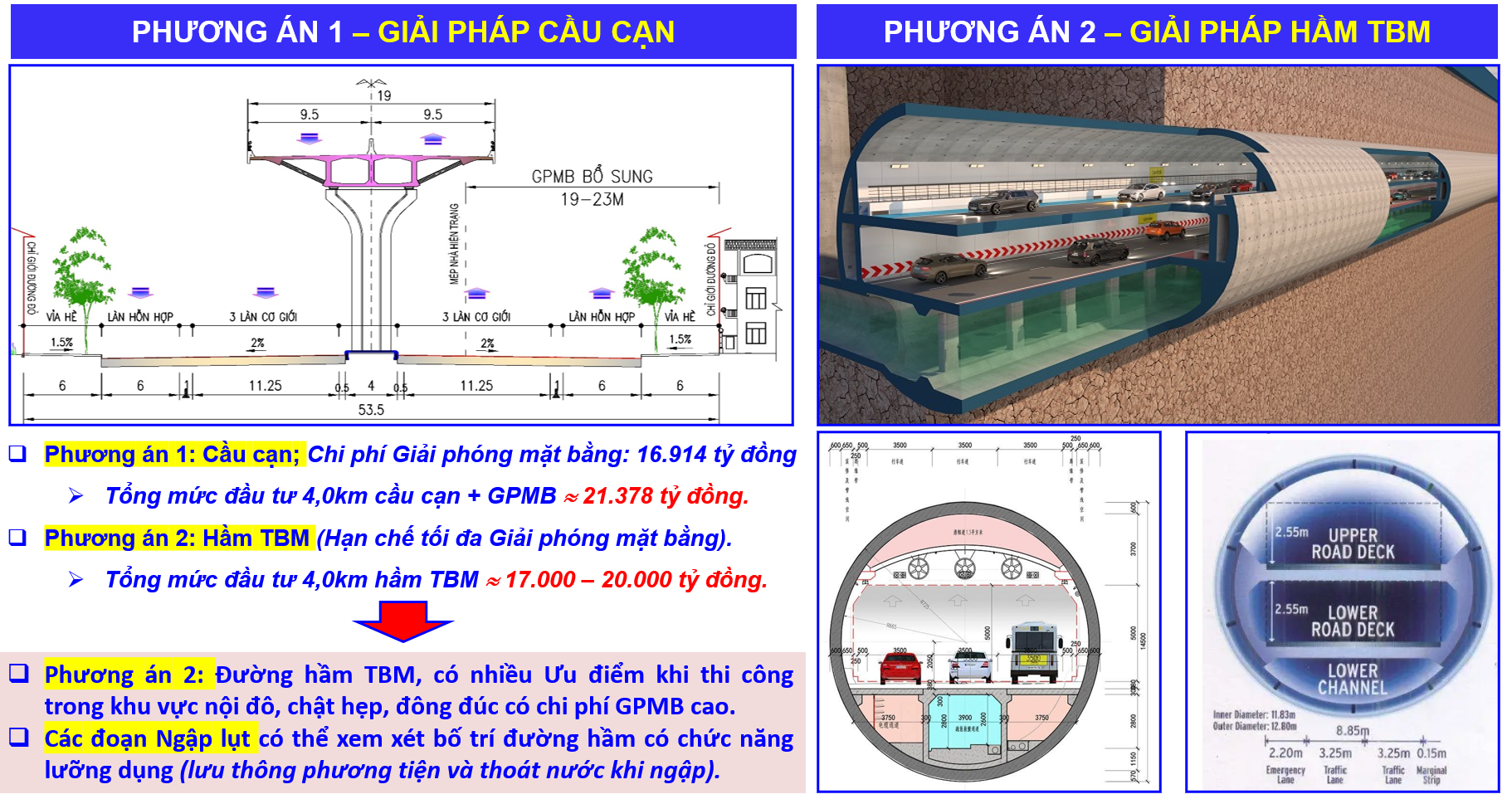
Various design options and forms of TBM tunnel cross-sections were presented for discussion and analysis.
To enable the capital Hanoi and Ho Chi Minh City to develop into model cities of sustainable, capable of rapidly adapting and recovering from natural disasters and potential risks, the Chairman of DEOCA Group emphasized the need to establish a closed-loop management model: “Risk Identification - Response Preparation - Execution and Handling - Review and Enhancement”. This process must be repeated cyclically to achieve the city’s safety criteria and resilience against natural disasters and flooding. Along with that is to build a data infrastructure platform and a Sustainable City Data Center, covering the entire system of above-ground and underground structures. This will integrate activity monitoring, forecasting, risk warning, and interconnected response into a unified system.
Also within the framework of the working visit, DEOCA Group, A2Z Construction Consulting Company, and experts from the Vietnam Institute of Water Resources Science, together with Chinese partners, directly visited and conducted on-site surveys of typical water management structures in Yangzhou City (Jiangsu Province). These included the Guazhou Pumping Station, Yangzhou Pumping Station, and Wanfu Dam. They also held meetings with the Yangzhou Flood Control and Drought Relief Control Center to exchange experiences in applying digital technologies.
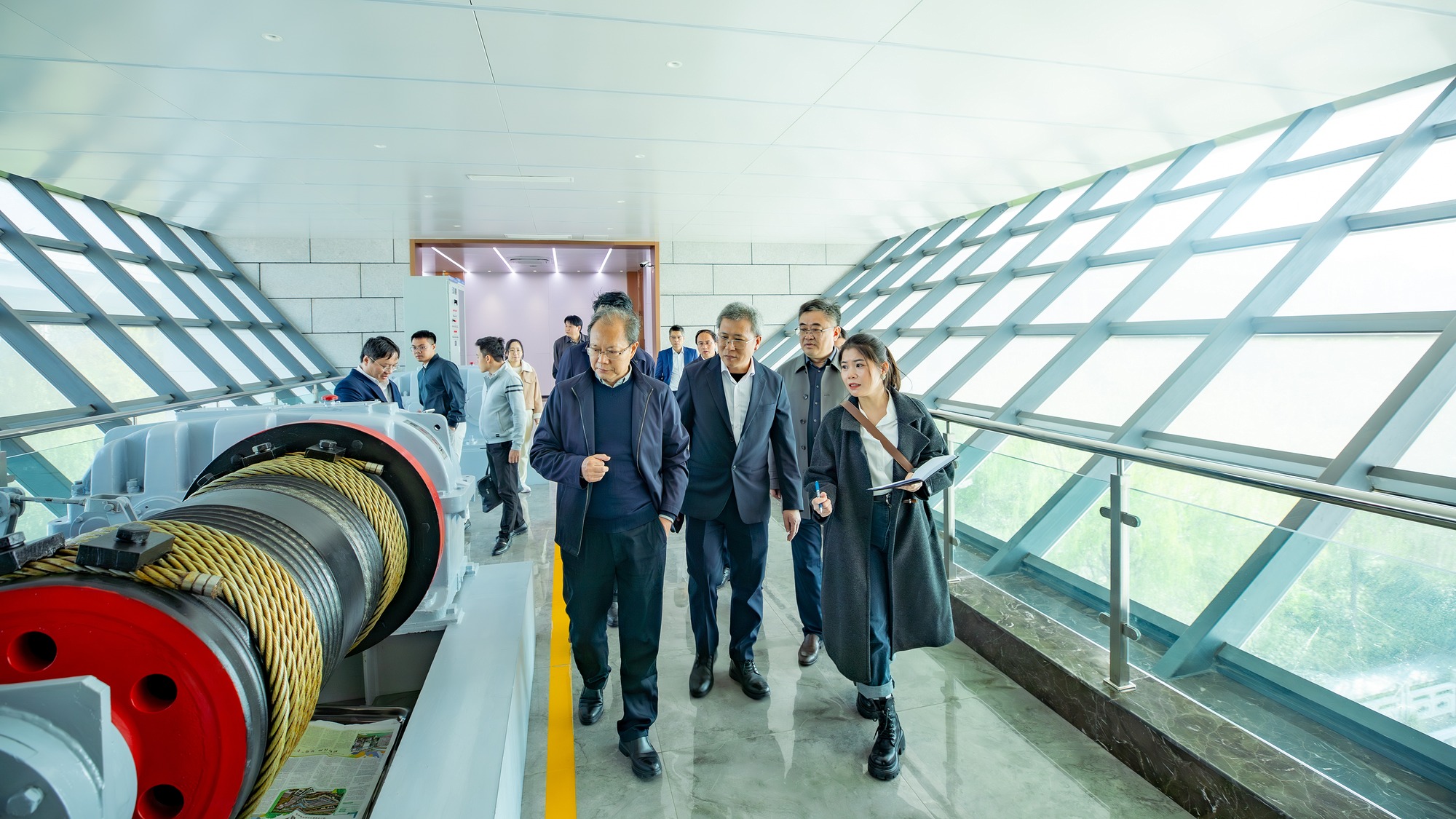
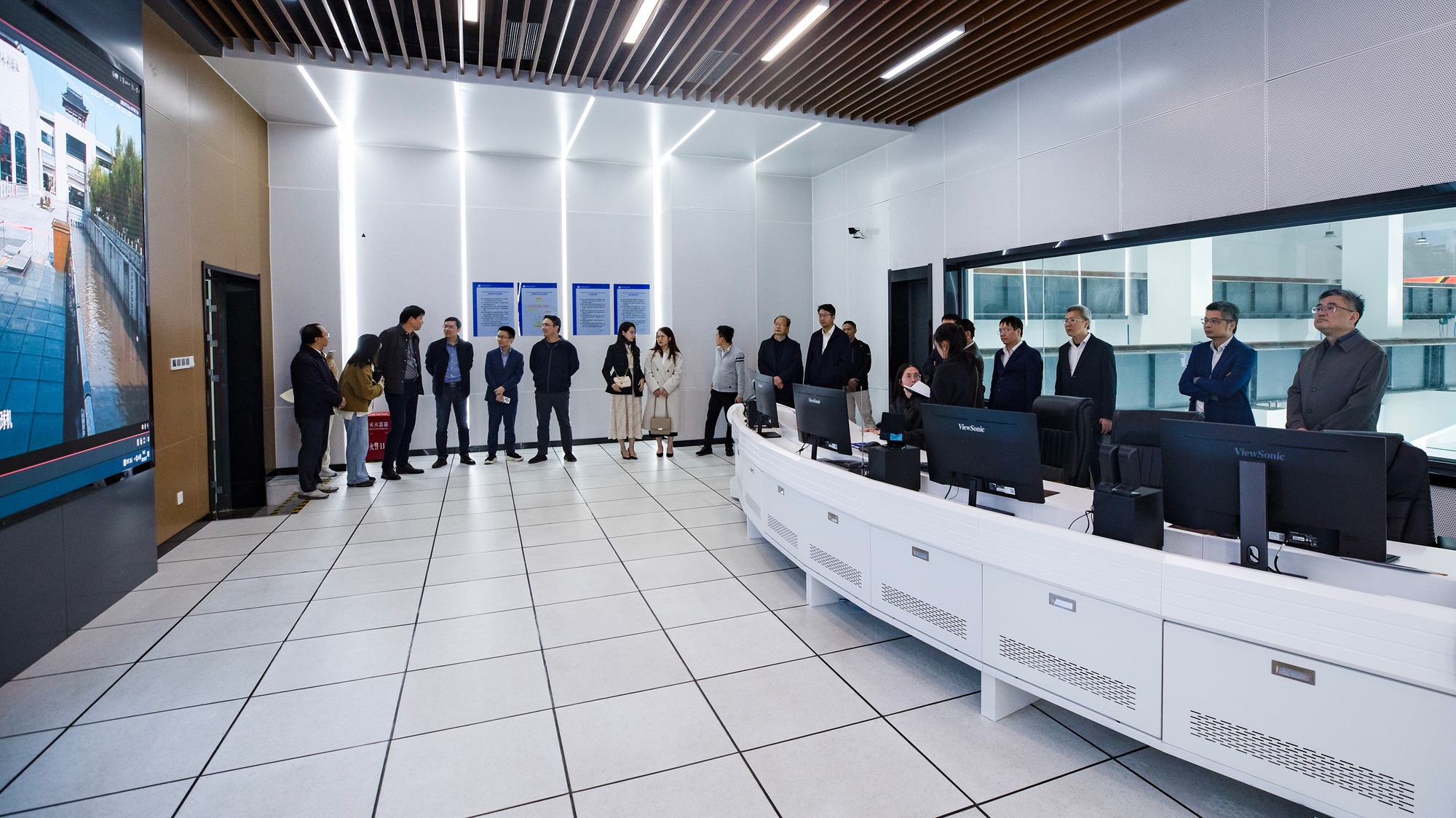 The delegation visited the Yangzhou Pumping Station - a system that ensures the safety of water draining into the ancient canal and the Huai River basin (Yangzhou).
The delegation visited the Yangzhou Pumping Station - a system that ensures the safety of water draining into the ancient canal and the Huai River basin (Yangzhou).
A representative from the Yangzhou Water Resources Institute, Expert Sheng Bing - Head of the Water Resources Planning Research Department - assessed that the flooding situation in major Vietnamese cities is like that of Yangzhou City (China) 10 to 20 years ago. Therefore, Yangzhou’s experiences in developing infrastructure in parallel with flood prevention can be helpful for Vietnamese enterprises concerned with this issue. He also supported the proposal to construct dual-purpose TBM tunnels, stating they will demonstrate superior advantages in urban water management.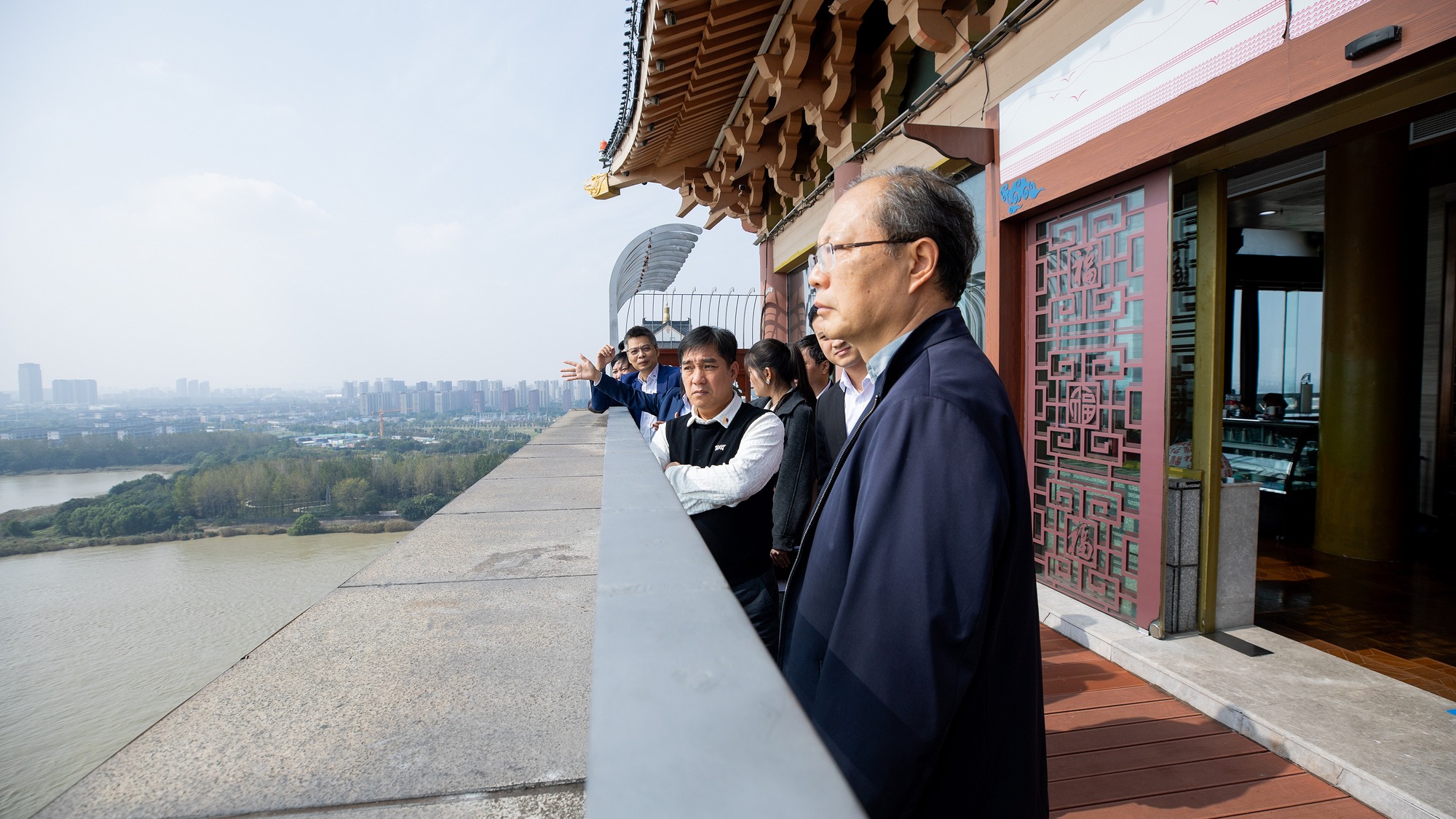
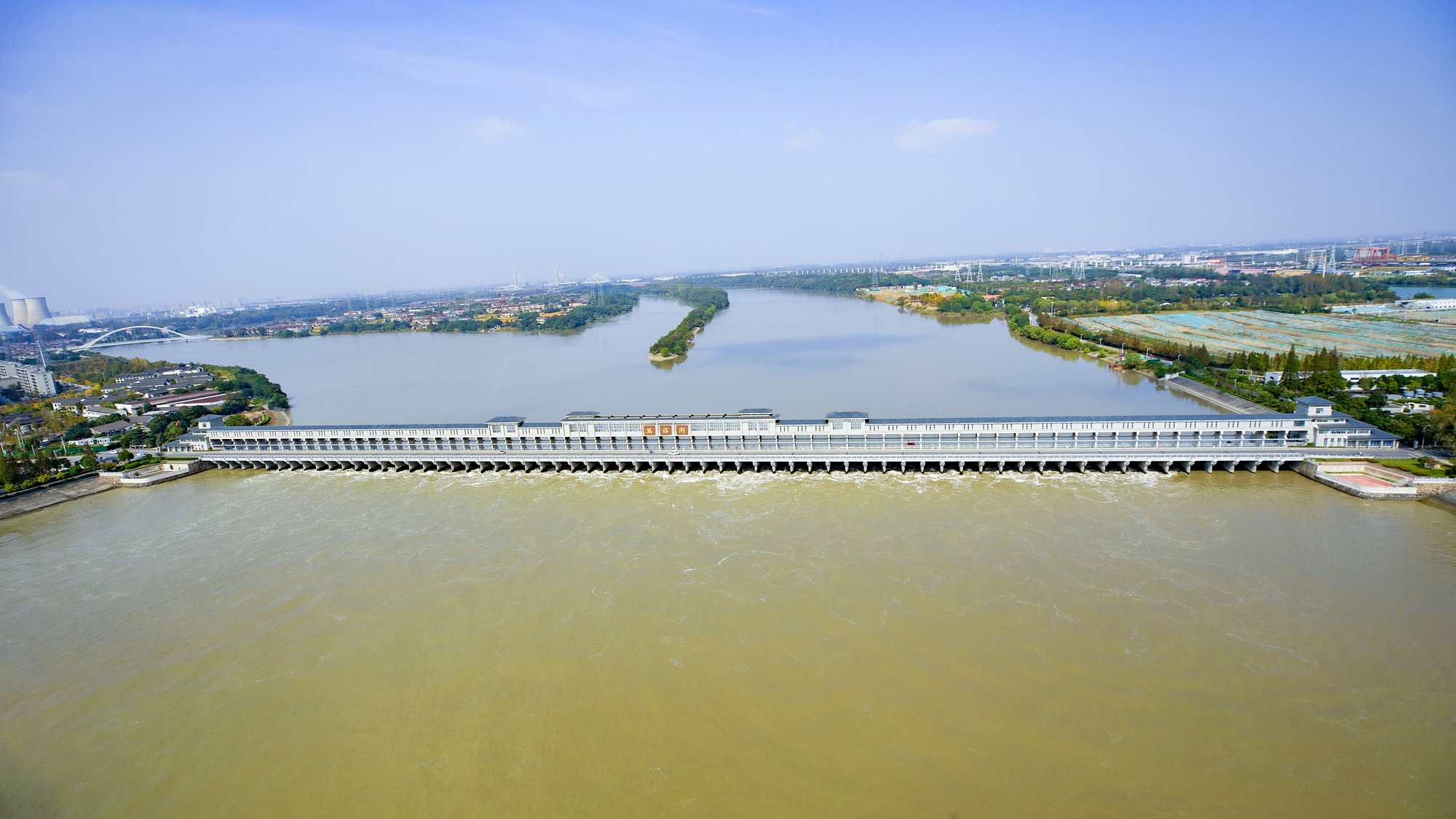
On-site survey of the Wanfu Dam, which regulates the water levels of Shaobo Lake and provides an ecological water source for the inner city of Yangzhou.
DEOCA Group stated that following this business trip, they will continue to collaborate with consulting units, research institutes, and universities both domestically and internationally to organize specialized seminars. These will focus on developing riverside urban models combined with resolving the long-standing inundation situation in major cities in Vietnam, especially in Hanoi and Ho Chi Minh City.
HOANG SANG - TRAN BINH


